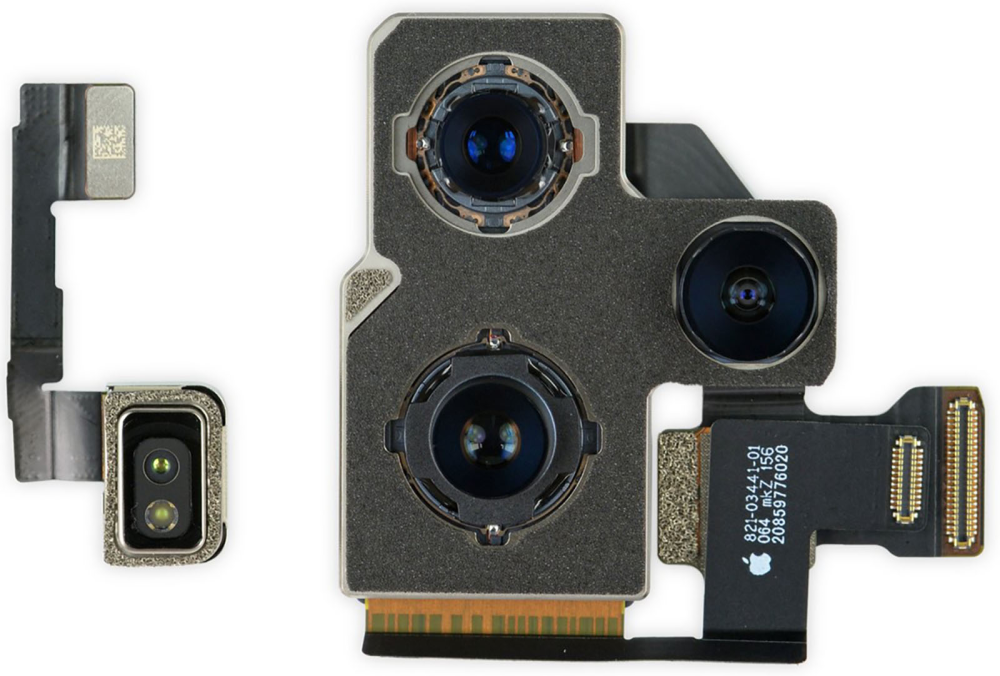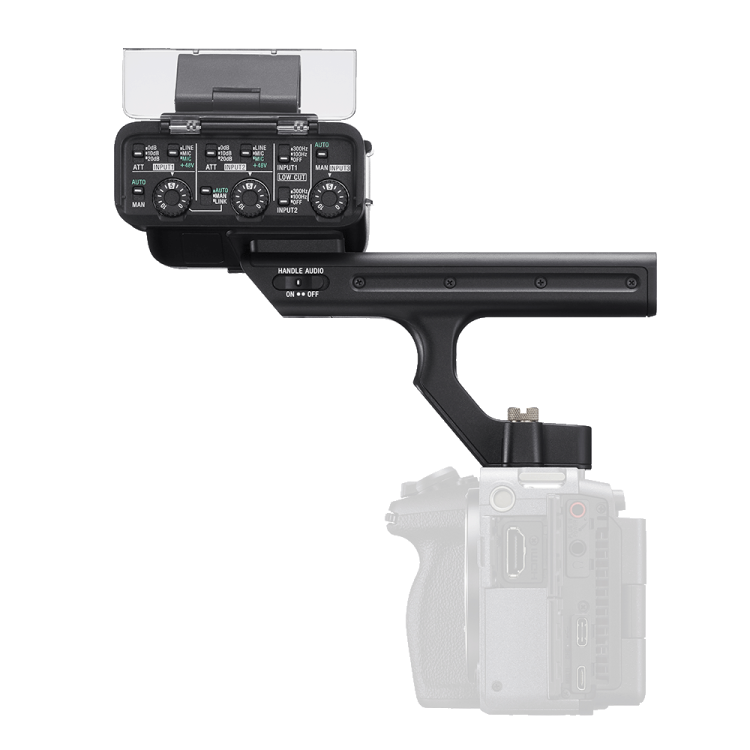-
Posts
7,885 -
Joined
-
Last visited
Content Type
Profiles
Forums
Articles
Posts posted by kye
-
-
Panasonic GH7
In: Cameras
Next release ... GX85mkii with GH7 sensor and LogC!
- homestar_kevin, John Matthews, sanveer and 2 others
-
 4
4
-
 1
1
-
Panasonic GH7
In: Cameras
-
15 hours ago, MrSMW said:
Well from a couple of reviews, it seems some were posted the camera to their respective home countries and some received it direct in Japan, because I am pretty sure those folks who have done initial reviews in Japan, did not fly back again!
Maybe they stayed in Japan after the event?
-
Panasonic GH7
In: Cameras
-
Panasonic GH7
In: Cameras
Real footage...
-
-
13 hours ago, eatstoomuchjam said:
I just poked around - most of what I have with people is either for short films that I shot for others or with friends who would be upset if I shared their image to an internet forum.
If it's OK for the people to be a bit out of focus (just for a skin tones test or something), I have a few from one of my own short films with people in the foreground or background.This is always my challenge. I have a project that I use for colour grading practice and testing that has two main sections, one with private images that are absolutely full of skintones, and the other section for images I can post publicly that scarcely has any because people don't want to be posted publicly.
-
4 hours ago, Marcio Kabke Pinheiro said:
I guess that @Dave Maze now could confirm it. 🙂
He said not to quote him on it...
-
Or more to the point, any data show that leather shoes helps to win Oscar more or easier than fabric or faux-leather?
If we're going to talk about what matters, at least let's start asking the right questions.
- zlfan, eatstoomuchjam and mercer
-
 3
3
-
Now the challenge of deciding between them....
-
-
-
4K G2 with Angenieux...
Obviously you'd have to crop into the image in post, but you'd still have heaps of pixels.
-
6 hours ago, John Matthews said:
So, the GH7 is going to be announced and it'll probably be the most capable from Panasonic while the S9 will be the "fun" camera. This was not the scenario I would have predicted: a big, capable M43 camera along side a rather small, limited FF camera.
Well, at some point the sheer size of the FF sensor becomes an issue when fitting it into a smaller body, and maybe that's the limit we've reached.
Not only is the sensor larger, but the IBIS must be more powerful because of the extra weight as well as thermal considerations from the extra power demands, which of course require a larger battery.
There's a reason the iPhone camera can be so small:
-
Panasonic GH7
In: Cameras
8 hours ago, eatstoomuchjam said:It doesn't, but if you're not in a rush, there's an app that dumps PRR to CinemaDNG with various compression options. That or you can use something like Scratch to do some raw adjustments and then export as ProRes. Definitely more of a pain than direct input, though.
Massive PITA though.
-
1 hour ago, BTM_Pix said:
Well, its taken 8 pages but we finally got from Gerald Undone to Trousers Undone.
So, that's a couple above average then, right?
-
Panasonic GH7
In: Cameras
1 hour ago, ac6000cw said:Latest 'spec' update on 43rumors.com (apply usual skepticism etc.) - note 'Prores internal Raw recording' is listed:
There goes hopes of using Resolve - it doesn't support Prores RAW.
-
1 hour ago, Thpriest said:
I used to have the 10-25 f1.7 and it was probably the perfect lens for me. It really was great. The pairing with the 25-50 would be great.
Why did you get rid of it?
Too heavy? too large?
-
4 hours ago, MrSMW said:
It boggles my mind that from a population of 333 million, those 2 are the ‘best’ options.
I know, I know, there is more to it than that and ultimately it all comes down to how much you got and who’s backing you etc, combined with just how many skeletons you have in that back closet, but faaaaaark, to the rest of the World (and a massive chunk of the US), as above, boggles the mind!
It makes perfect sense to me.
Those two are the only ones that could scrape through without being eviscerated by more than 75% of the population. The fact there were even two that made it should surprise you if you stop to realise that even on this very forum, no camera in the history of time escaped this fate, despite having the entire worlds camera industry desperately trying to make something we'd like!
-
Panasonic GH7
In: Cameras
19 minutes ago, IronFilm said:This here is both a top handle and an audio accessory.
If you want to mount a mini short gun such as the Deity SMic3S or a Sanken CS1e then this is the logical way to do it, be using a top handle too.
So let's ignore the top handle for a moment, as that size doesn't matter.
Can the audio accessory actually be made any smaller?
It really can't be, not significantly so. Not if you wish to keep full size XLR inputs plus the knobs/switches for direct control over it (vs doing menu deep diving). Which is the entire point of it!!
Can you mount the accessory without the handle?
-
52 minutes ago, hojomo said:
I don't think this sloppy, metastatic tumor mafia don could have gone as long & created as much political space & havoc as he has, without an already-existing popular collapse in trust of America's institutions by regular people.
The Democrats are offering a sundowning, uninspiring man who can't be counted on to remember why he's in the room he's in as the alternative to what they themselves characterize as a threat to democracy. They will blame everyone but themselves if Trump wins again, starting with young people appalled at what is happening to Gazans and social media misinformation (China & Russia).
NAB's preparing to launder anything and anyone the two parties put up as legitimate - they are in no way an outsider to what you will see generally should a very plausible scenario like Trump winning (electoral college being the minimum barrier, not popular vote) in November.
I saw a presentation from someone who was following his campaign from the start and they said he just said random things in his early speeches and kept repeating the things that got the biggest response from the crowd, so his entire campaign was just telling people what they wanted to hear.
Sad thing is, it worked.
I'm a huge fan of democracy.... the thing that lets it down is the voting public.
-
Panasonic GH7
In: Cameras
25 minutes ago, KnightsFan said:Well yeah obviously if its terrible quality then it doesn't matter whether it's 16, 24 or 32 bit, it'll suck. Assuming the preamps are roughly in line with what you get on most prosumer equipment, and that it does some kind of dual gain merging like virtually every other prosumer 32 bit recorder, and that the module doesn't physically break when you breathe on it, then 32 bit float is a huge improvement for a huge number of people.
and isn't 15x the size of the camera.
I mean, seriously:
Just another instance of "people who want quality must be fine with a humungous camera".
-
20 minutes ago, IronFilm said:
well the BMPCC for its niche as a very low budget "cinema camera" I think can kinda hold up and live without IBIS, HFR (still has 60fps, enough for most purposes), great audio, or great AF. Because that's the type of camera it is (of course, it was aimed at bird photographers, then yeah, you need a totally different feature set!)
It's only in the last couple of years or so do I think the lack of 4K is becoming more of an issue as it ages.
But yes, sadly the battery situation of the BMPCC has always been its biggest weakness, they should have just used a slightly bigger grip and gone with perhaps a NP-F550 or similar battery.
It seems strange to me that because a cinema camera is small that somehow it is judged like a P&S rather than a cinema camera. Many/most cinema cameras lack IBIS and reliable AF-C today, and even P&S cameras smaller than GX85 lack IBIS.
It is a pity that they didn't have a bigger grip / battery though. One good way to do it would be to look at the smallest lens that would practically be used (which in this case is the 14mm F2.5 or 20mm F1.7) and then make the grip just smaller than that.
-
21 minutes ago, IronFilm said:
I half suspect that he doesn't have a pre-release GH7 loaner.
The issue is if Gerald has done not just "a negative review" but does what others have even called "the MOST negative Day 1 review" for the previous GH6, and then you stack on top of that all his negativity towards other Panasonic cameras... why would Panasonic ever trust him to give them a fair go review for the GH7?
Time flies when you get older, plus I think covid distorted all of our senses of time
That kinda makes sense, but also doesn't. As the timing is too tight.
Why not just show the demo GH7 to them and have loaners sent out?
The change up makes sense if perhaps the GH7 was pushed back by a couple of months or more.
But this is really only a small handful of weeks later since the Japan trip. Surely this trip could still have been used for a GH7 launch?? Rather than making a mess of the S9 launch!!
I'm surprised the GH6 is being discontinued so fast. Usually the pricing of the new model is high enough, especially compared to the price of the old model on sale, that there is enough of a pricing gap that the new and old model can sell alongside enough and be targeting quite different market niches.
At least for a few months or perhaps a year plus, until the new model sees its first discounts.
In extreme cases, you see the likes of Sony keeping their older models around for ages and ages, so they can keep on targeting lower and lower price points (as they get discounted) without having to target increasingly cheaper price points.
Maybe we'll see soon see "a GH6mk2" , like the GH5mk2. It will have very small changes, enough to call it "mk2", but not so many changes that it costs much R&D at all for Panasonic.
That then gets launched at an aggressive price point, so as to cater to everyone who wants "a cheaper GH7".
Or they just want to distance themselves from it as much as possible.
Also, writing things off can help with your tax bill sometimes, so could be corporate finance hijinx.






Nikon Z6III is coming.. as mini Z8
In: Cameras
Posted
37 mins minimum.
The days of 2s clips when accidentally double-pressing the record button are finally over!